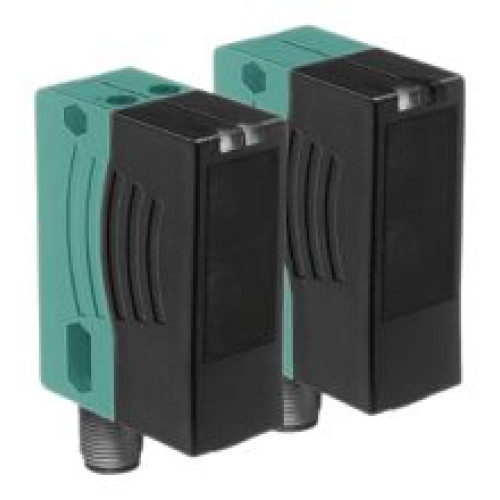Thru-beam
In through-beam photoelectric sensing, also known as opposed mode, the transmitter and emitter are in separate housings. Light emitted from the transmitter is aimed directly at the receiver. When an object breaks the beam of light between the emitter and receiver, the receivers output changes state.

Thru-Beam Sensors
In through-beam photoelectric sensing, also known as opposed mode, the transmitter and emitter are in separate housings. Light emitted from the transmitter is aimed directly at the receiver. When an object breaks the beam of light between the emitter and receiver, the receiver’s output changes state.
Through-beam sensing is the most efficient sensing mode which results in the longest sensing ranges and highest excess gain. This high gain enables through-beam sensors to be reliably used in foggy, dusty and dirty environments.
Applications
- Monitoring of production and packing lines
- Product fill measurements through transparent containers
- Protecting dangerous areas for automatic doors
Build innovative machines faster without costly prototyping with Efficient Motion Control.
With Effective Motion Control, machine builders can easily overcome major challenges and enable faster time-to-market, increased functionality, resolve complex system requirements, and demands for safety and sustainability.


